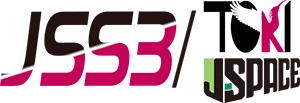Deformation Analysis of Light Weight Structural Materials
JAXA Supercomputer System Annual Report February 2024-January 2025
Report Number: R24EDU10505
Subject Category: Space and Astronautical Science
- Responsible Representative: Toshiya Nakamura, Professor, Institute of Space and Astronautical Science, Department of Space Flight Systems
- Contact Information: Toshiya Nakamura, Professor, Institute of Space and Astronautical Science, Department of Space Flight Systems(nakamura.toshiya@jaxa.jp)
- Members: Toshiya Nakamura
Abstract
In order to evaluate the structural integrity of space structures and spacecraft structures, it is necessary to understand the deformation behavior of materials under the severe mechanical and thermal loads that are unique to launch and outer space. In particular, composite materials, which have been increasingly used in recent years, are composites of fibers and resins and have a laminated structure consisting of layers with different reinforcement directions. In this study, we aim to create a model that is as faithful as possible to the microscopic structure and deformation mechanism of the material, and to clarify the stress generated within the layers due to the interaction between fibers and resins, as well as the interactions between each layer.
Reference URL
N/A
Reasons and benefits of using JAXA Supercomputer System
In this study, the number of nodes becomes huge in order to model the microscopic structure of the material using finite elements, and the thermal stress analysis is unsteady. A large amount of computational resources is required to perform such an analysis, and it is difficult to run it on a personal computer.
Achievements of the Year
We carried out a thermal stress analysis of a laminate with a large temperature gradient in the thickness direction, assuming a liquid hydrogen tank. Also conducted was a deformation analysis of a laminate with curvature. In the former, we also conducted an experiment of crack propagation due to cooling. In the future, we plan to confirm the consistency between the analysis and the experiment. As for the latter, we are currently at the stage of investigating the out-of-plane stress that inevitably occurs due to the curvature of the structure, and we plan to develop a strength evaluation method in the future.
Publications
Uchida, M., Hisada, S., Yamazaki, T., Yoshimura, A., Nakamura, T., Murayama, H., "Digital Twin of CFRP for prediction of crack propagation with thermal stress", JCCM-16, Feb.27 to Mar. 1, Tokyo
Usage of JSS
Computational Information
- Process Parallelization Methods: N/A
- Thread Parallelization Methods: N/A
- Number of Processes: 1
- Elapsed Time per Case: 20 Minute(s)
JSS3 Resources Used
Fraction of Usage in Total Resources*1(%): 0.00
Details
Please refer to System Configuration of JSS3 for the system configuration and major specifications of JSS3.
| System Name | CPU Resources Used(Core x Hours) | Fraction of Usage*2(%) |
|---|---|---|
| TOKI-SORA | 0.00 | 0.00 |
| TOKI-ST | 0.00 | 0.00 |
| TOKI-GP | 0.00 | 0.00 |
| TOKI-XM | 0.00 | 0.00 |
| TOKI-LM | 0.00 | 0.00 |
| TOKI-TST | 0.00 | 0.00 |
| TOKI-TGP | 0.00 | 0.00 |
| TOKI-TLM | 0.00 | 0.00 |
| File System Name | Storage Assigned(GiB) | Fraction of Usage*2(%) |
|---|---|---|
| /home | 0.00 | 0.00 |
| /data and /data2 | 0.00 | 0.00 |
| /ssd | 0.00 | 0.00 |
| Archiver Name | Storage Used(TiB) | Fraction of Usage*2(%) |
|---|---|---|
| J-SPACE | 0.00 | 0.00 |
*1: Fraction of Usage in Total Resources: Weighted average of three resource types (Computing, File System, and Archiver).
*2: Fraction of Usage:Percentage of usage relative to each resource used in one year.
ISV Software Licenses Used
| ISV Software Licenses Used(Hours) | Fraction of Usage*2(%) | |
|---|---|---|
| ISV Software Licenses(Total) | 3.53 | 0.00 |
*2: Fraction of Usage:Percentage of usage relative to each resource used in one year.
JAXA Supercomputer System Annual Report February 2024-January 2025


